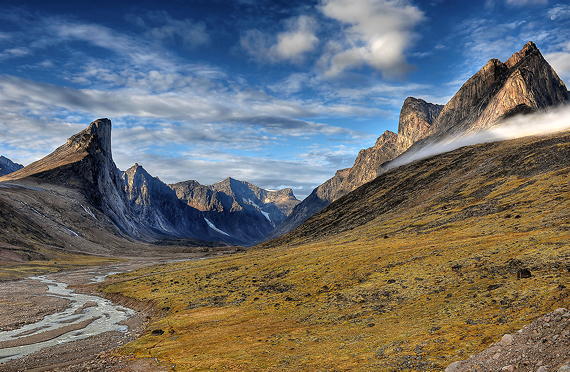New map for Nunavut’s Auyuittuq National Park features Inuktitut place names
Historians hope the hundreds of Inuktitut place names will help visitors see the land as having a deep Inuit history.

A new Parks Canada map for Auyuittuq National Park has plenty of new names on it — and they’re written in the Inuit language.
It’s the result of an eight-year project that involved more than 40 collaborators who sought historical Inuktitut place names within the park, which is located in Baffin Island’s Cumberland Peninsula.
Thor Peak, which is the park’s highest point, is called Qaiqsualuk, which means “enormous bedrock.”
Mount Asgard, which was featured in a James Bond movie, is now Qattaujannguaq, which means “looks like a barrel.”
Ozymandias — which is named after a Percy Bysshe Shelley poem that meditates on a fallen monument to an ancient king who thought he was immortal — is Inattiavaaluk, which means “beautiful mountain.”
The Inuit Heritage Trust did a lot of the information gathering, along with the Inuit Knowledge Working Groups for Auyuittuq National Park in Pangnirtung and Qikiqtarjuaq. The final maps were vetted by a committee of local knowledge holders. The two interpreters involved were Madeleine Qumuatuq of Pangnirtung and Martha Newkingnak of Qikiqtarjuaq.
Karen Routledge, a historian at the Indigenous Affairs and Cultural Heritage Directorate, said the project will help ensure future generations will be able to refer to Inuktitut place names while out on the land in the park.
As well, the map is educational for those who are not living in the area.
“When a lot of people in southern Canada think about Nunavut, if they do think about it, they think it is empty,” Routledge said.
Now, people will have hundreds of Inuktitut place names to see the land with a deeper Inuit-focused history, she said.
“I hope when non-Inuit visitors see it, they’ll have a lot of respect for the people who have lived there.”